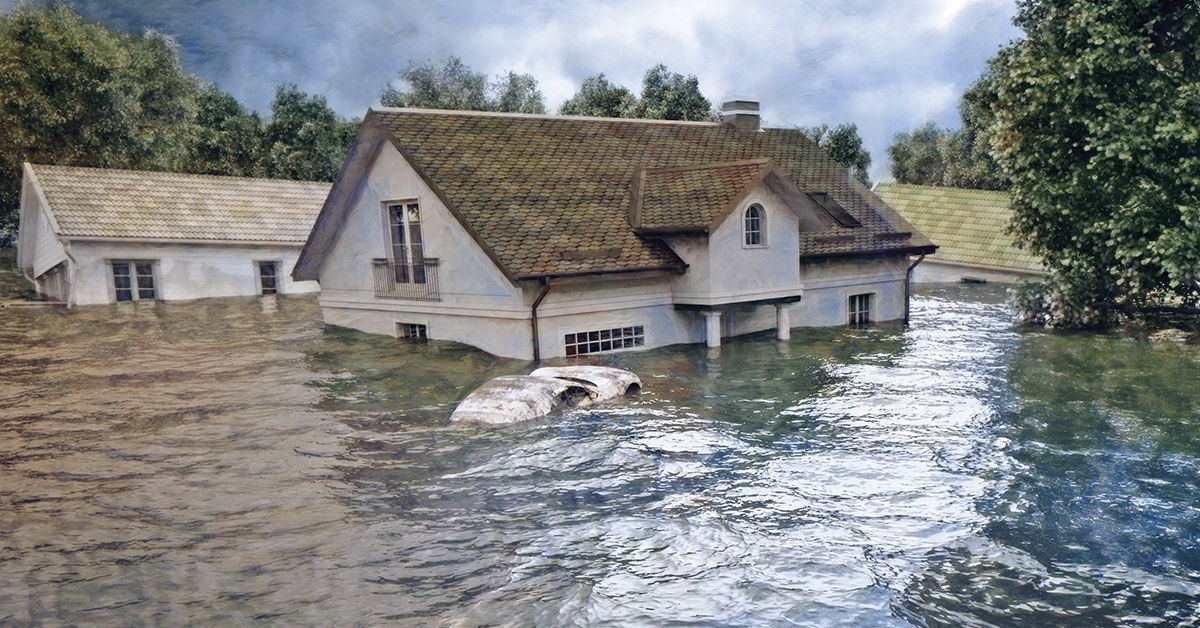There’s weather and then there’s extreme weather — the kind that devastates an area in the matter of moments, leaving families homeless and facing insurmountable losses. For folks in a presidentially declared major disaster area who have lost their primary home, mortgage originators can be of great comfort and assistance.
The source of aid? The Federal Housing Administration’s 203(h) loan, a government-insured mortgage program that can help get affected residents back into a safely constructed home sooner rather than later. The first question to ask yourself is, what is a presidentially declared major disaster area?
If a borrower has fallen into the ‘derogatory credit’ category, a lender may look at their credit history to see if it was acceptable prior to the presidentially declared major disaster.
These are usually declared in any area that suffers a severe natural disaster. This can be such things as hurricanes, tornadoes, earthquakes, volcanic eruptions, landslides and other major catastrophic events. This presidential declaration labels the disaster to be of such severity that it is beyond the combined capabilities of state and local governments to respond. Government experts consider the extent of the disaster, the impact on individuals and public facilities, and the types of federal assistance that might be needed. In some cases, the final determination can take weeks.
Families who are the victims in one of these disaster areas are suffering from loss of home, community and services; fractured infrastructure; interruption of supply chain; and in many cases, loss of life. Mortgage lenders and originators have the resources to help by utilizing the FHA 203(h) program.
Rebuilding communities
Why FHA 203(h)? Some of the advantages of the program, including the option for 100% financing, is that it includes lower mortgage rates and more flexible qualification requirements, as well as a lower credit-score requirement. This specialty program is designed to help victims in these disaster areas recover by making it easier for them to obtain mortgages and either become homeowners or reestablish themselves as homeowners.
Any person whose primary residence has been destroyed or severely damaged in a presidentially declared disaster area is eligible to apply, even if they were renting the property. The program provides mortgage insurance to protect lenders against the risk of default on loans to qualified-disaster victims.
Due to the nature of the work needed to correct the damage sustained by these homes, this is a construction program, not a renovation program. An FHA 203(h) mortgage is one way to provide a displaced homeowner with a way to move out of a disaster area or to rebuild their damaged home and return to it.
One of the goals of this program is to help retain a sense of community by offering financing that entices victims to remain in place rather than relocate. Rebuilding communities retains the integrity of neighborhoods and supports recovery of the area at large while providing local businesses with continued traffic that ensures they can continue to operate. A community rebounds easier when its local businesses “survive the storm.”
Understandable hardships
The 203(h) program offers features that make homeownership easier. For example, since no downpayment is required, the borrower is eligible for 100% financing if they choose and qualify. Repayment terms of 15 or 30 years are available.
Closing costs and prepaid expenses must be paid by the borrower in cash or through premium pricing by the seller, subject to a limitation on seller concessions.
The lender also collects an upfront insurance premium (which may be financed) from the borrower at the time of purchase, as well as monthly premiums that are not financed but added to the regular mortgage payment.
Borrower credit qualifications and rules are still required. But the minimum credit score for the 203(h) loan is lower than for many other government-backed and conventional mortgage programs, which aids disaster victims who also may be dealing with credit challenges. (Lender overlays also may apply.)
Thankfully, this age of technology can help families recover some of what was lost. Given the nature of the circumstances that established the need for this specialty program, borrowers will need to work closely with their mortgage professionals to provide the required documentation. Lending agencies are familiar with the hardship of destroyed records due to the devastation of the homes they were stored in.
In difficult times like these, supporting documentation from other sources such as the IRS or other agencies will need to be relied upon. If a borrower has fallen into the “derogatory credit” category, a lender may look at their credit history to see if it was acceptable prior to the presidentially declared major disaster. If derogatory credit was a direct result of the effects of the disaster, the borrower will be deemed a satisfactory credit risk.
Flexible guidelines
Unlike some other government-backed and conventional mortgages, the FHA 203(h) program
does not apply borrower income limits. Lenders typically use a debt-to-income (DTI) ratio of 43% to determine the loan size that a borrower can afford, although it is possible to qualify for a 203(h) loan with a DTI ratio of 50% or higher under certain circumstances (varies by lender).
The DTI ratio represents the maximum percentage of a borrower’s monthly gross income that can be spent on fixed monthly housing expenses. This includes the mortgage payment, property taxes, homeowners insurance and mortgage insurance premium, as well as other potentially applicable expenses such as homeowners association fees, plus other monthly debt payments such as credit cards, auto loans and student loans.
The higher the debt-to-income ratio applied by the lender, the larger the loan your borrower can qualify for. Circumstances under which it is possible to get approved for an FHA 203(h) loan with a DTI ratio of 50% or higher include borrowers with excellent credit scores or job histories. Borrowers making larger downpayments and those with supplemental sources of income that may not be reflected on their mortgage application, such as from a spouse or part-time work, also may qualify with a higher DTI ratio.
Lenders may exclude the mortgage payments on a borrower’s destroyed or severely damaged home when calculating the DTI ratio for a new mortgage. Excluding the payments on their current residence can significantly improve a borrower’s ability to qualify for a loan or enable them to afford a higher loan amount.
In this case, the FHA 203(h) lender is required to verify that the borrower is working with their existing lender to
address the mortgage on the damaged or destroyed home. Additionally, any homeowners insurance payouts must be applied to the mortgage on the affected property.
● ● ●
Homeowners who have survived a disaster and live in one of these presidentially declared major disaster areas need to be made aware of the FHA 203(h) option. It might just be the solution to start putting the fractured pieces of their lives back together. ●
-
Laura Brandao is chief growth officer and a partner at mortgage lender EPM, where she oversees operations and business development. She also serves as the CEO of Lighthouse Lending Capital, a new division of EPM that specializes in unique loan programs and private lending. She serves with several organizations dedicated to lifting others, including as chair of the visionary program for the National Association of Minority Mortgage Bankers of America (NAMMBA) and on the Mortgage Bankers Association of New Jersey’s women's committee.
View all posts





